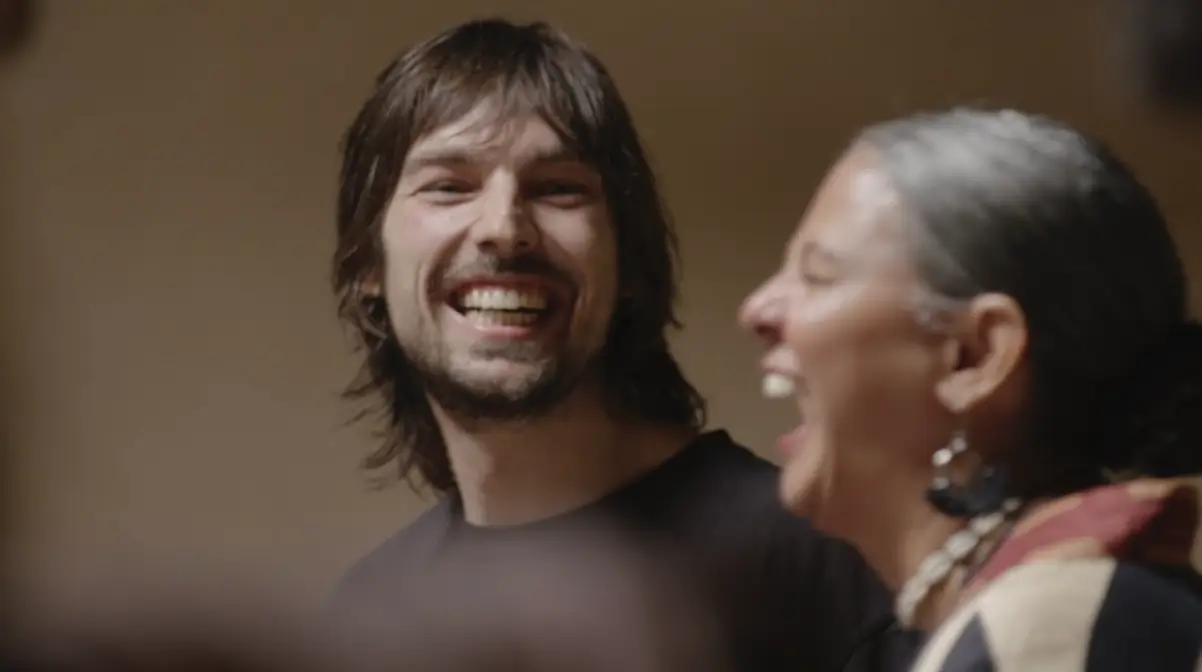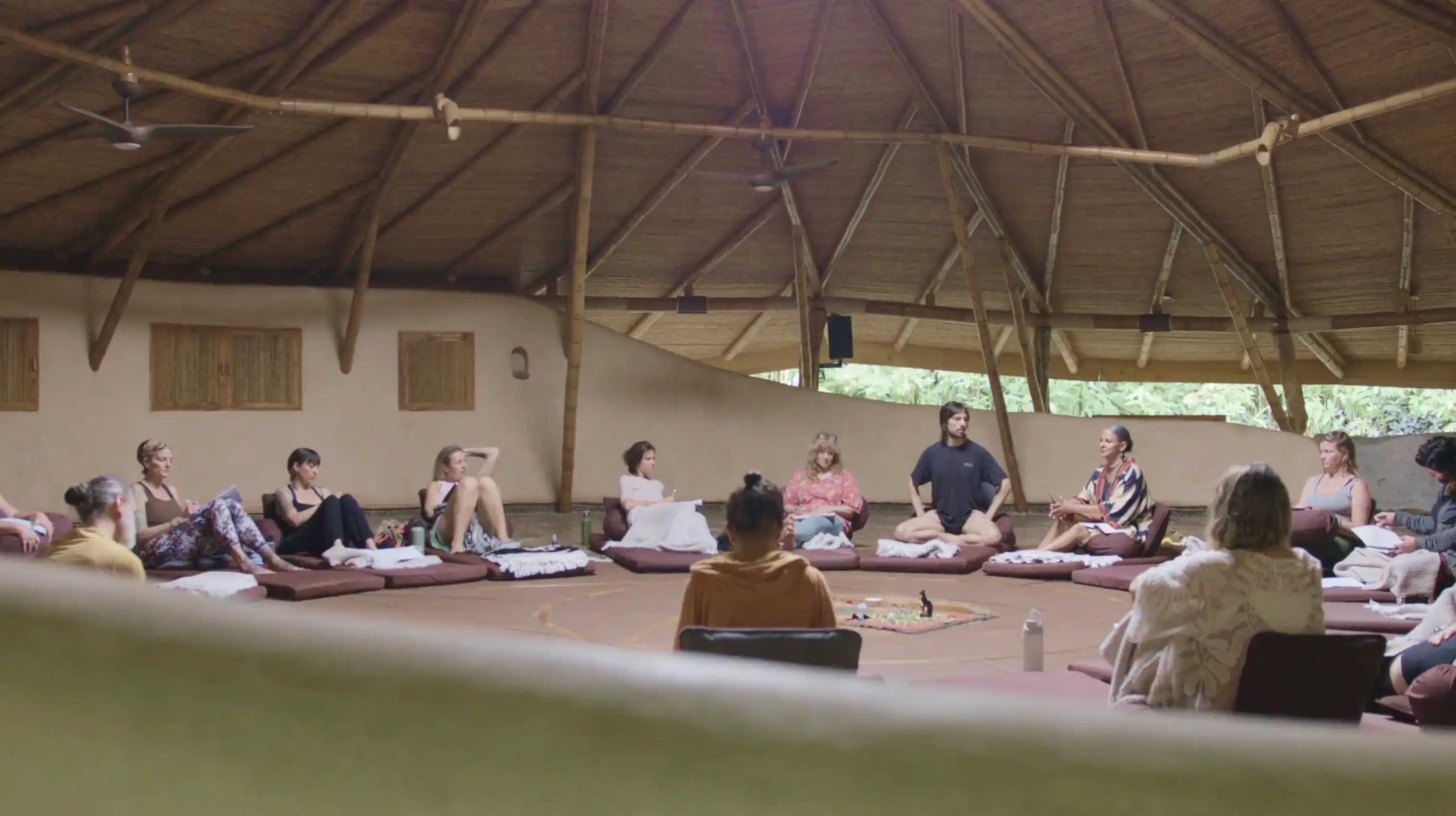Last week, School of Psychedelics hosted an illuminating webinar featuring Dr. Katherine Lawson and several program graduates who shared powerful insights about our unique approach to psychedelic integration.
Unlike the analytical methods commonly used in therapeutic settings, our Embodied Imagination® for Psychedelic Integration method offers a transformative approach that works directly with the body's wisdom and the symbolic language of psychedelic visions.

The Problem with Traditional Integration
"Indigenous cultures don't talk about integration because it's integrated in their world. It's Western culture that has to understand this concept of integration"
Dr. Lawson shared during the webinar, referencing insights from her mentor Dr. Stanley Krippner's extensive field studies of shamanic practices worldwide.
From an indigenous cultural perspective, integration simply means "a commitment to change." This highlights a crucial gap in conventional Western approaches to psychedelic experiences – we often intellectualize what are fundamentally embodied, non-rational experiences.

A Method Built on Transformation, Not Information
Our Embodied Imagination® certification program differs fundamentally from other educational offerings. As Dr. Lawson emphasized during the webinar: "This isn't just a learning; this is a transformation and a learning. If you're not ready for that, then maybe this isn't the training."
Program graduate Julia, a psychiatric nurse and psychotherapist, confirmed this transformative quality:
"I feel like my manifestation quality improved... I can already see with clients they can experience such deep healing. It's something so completely different than I've experienced before."
Another graduate, Katya, who hosts retreats with psychedelic medicines and works with indigenous communities in Colombia, shared how the method changed her own relationship with plant medicines: "I thought I learned how to interpret and understand the insights. What I didn't know until I experienced embodied imagination was how I really felt about these insights and what would it take for me to actually implement it in my life."

The Sacred Meets Science: Breaking Habitual Consciousness
One of the most powerful aspects of our method is how it helps clients step outside of what Dr. Lawson calls "habitual consciousness" – the ego perspectives that often formed during profound or traumatic moments in our past.
"Our habitual consciousness or ego perspectives are formed in moments that are quite profound, including profoundly traumatic,"
Dr. Lawson explained.
"We put these things into play, and they jump into action as ways of explaining every single moment of our life that aren't necessarily always beneficial to our current day state."
The Embodied Imagination® method specifically addresses this challenge by guiding clients into a hypnagogic state where they can temporarily set aside these limiting perspectives and allow the images from their psychedelic journeys to speak for themselves.

Escaping the Interpretive Trap
During the webinar, several graduates emphasized how this method differs from interpretive approaches. Renee noted: "A lot of people think of dream work as an interpretation, but this method isn't an interpretation of the visions or dreams."
Katya added:
"Participants, patients, who participate in a psychedelic journey, they kind of take the imagery and translate it one to one into their daily life. But sometimes images are relative. They are not always what they seem to be, and that's where integration is very important."
This recognition that psychedelic imagery speaks a symbolic, metaphoric language rather than a literal one is crucial to effective integration. As Dr. Lawson explained, the images that emerge during psychedelic experiences use "the primordial language of the subconscious" – a language that our habitual consciousness may not readily understand.

Courageous Encounters with Difficult Images
Working with challenging or traumatic material requires courage – both from clients and practitioners. Katya shared a powerful example:
"As a practitioner, sometimes it's hard to go into that experience with the client again and again, because you feel like you are re-traumatizing or bringing up again something very heavy and not necessarily pleasant."
However, she described a recent session where working through difficult childhood imagery ultimately led to "a very shifted dynamic and empowerment in that client's understanding of who they are today." She emphasized that "images are not always literal, and as much as the image might carry a lot of heavy emotion in the moment in the journey, they are not necessarily heavy through integration."
Julia shared a similar experience of guiding a client through traumatic memories: "During the session, he cried, he screamed... and after the session, he was really hugging me, and he told me he did years of talking therapy, and he was always wondering he has a sore throat so often, and also this dark pain in his solar plexus... it all made so much sense for him."

The Neuroscience of Transformation
The method's effectiveness isn't just experiential – it's backed by neurological understanding. Dr. Lawson explained that "negative memories shape our neural pathways, so that if we can hold in the body at the same time the negative and something new that one of these images might lend us, then what fires together, wires together, and we have the opportunity to change those neural pathways."
This process allows clients to "borrow a healing state from an image" that can help reshape neural pathways associated with depression, anxiety, or other challenging mental states.
The Alchemical Process: Creating Something New
Perhaps the most fascinating aspect of the Embodied Imagination® method is what Dr. Lawson calls "the composite" – the final step in the process where clients simultaneously hold multiple embodied perspectives from their psychedelic journey.
"That's where the magic happens," Dr. Lawson explained. "In Jungian terms, it's called the transcendent function. That's where something new comes out of all those ingredients."
Renee illustrated this process with a client example:
"Holding those two very different sensations in different parts of her body at the same time, something new emerged. So there's like a synergy between those two very different sensations, and something new emerged."
Dr. Lawson advised practitioners: "The idea is not to attach to any of the ingredients, but to see what comes out of the cooking. And that is the integration piece, whatever all of those images give you, in a felt and bodily sense, you can continue to practice that for days, for months, for years after your session."

Empowerment Through Removing the Power Dynamic
One of the most significant benefits of this approach is how it shifts traditional therapeutic power dynamics. "It really removes the power dynamic that's often involved in conventional psychotherapy, where you're guiding someone to an answer that you believe that you probably already know," Dr. Lawson noted.
Instead, the Embodied Imagination® method is "really self-empowered. It's really that the images speak for themselves. It's really that we hold our own medicine, and so there's no analysis, there's no interpretation, the images speak for themselves."
This empowerment extends to the training process itself, where students practice with each other and experience their own transformation. As Dr. Lawson described it:
"When we're training in the method we're practicing with each other, and we are basically mucking about in each other's deep psyche. And so it requires a certain amount of courage, a certain amount of vulnerability and a certain amount of willingness to face what's there."

Experience the Method Yourself
Our webinar provided just a glimpse into this powerful integration approach. If you're interested in experiencing Embodied Imagination® firsthand, we're offering free sessions with our students who are completing their practicum hours.
Contact us at info@schoolofpsychedelics.com to be added to the list.
Dr. Lawson closed the webinar with a powerful reminder that encapsulates our philosophy:
"We don't think ourselves whole, we feel ourselves whole. And so what embodied imagination does is it allows us a chance to anchor in the states, capacities, perspectives and emotions that these images come carrying, if we will only host them in that way.
Interested in learning more about our certification program or experiencing an Embodied Imagination® session?
Visit our certification page or contact us at info@schoolofpsychedelics.com to explore how you can become part of this transformative approach to psychedelic integration.

Thank you to
for producing this powerful story
Related articles
Explore personal journeys and expert insights



.webp)
.webp)